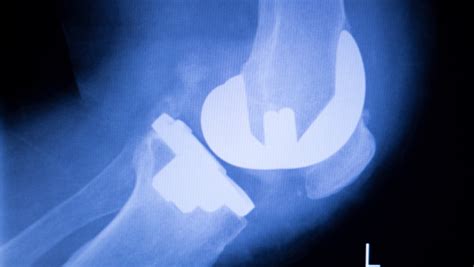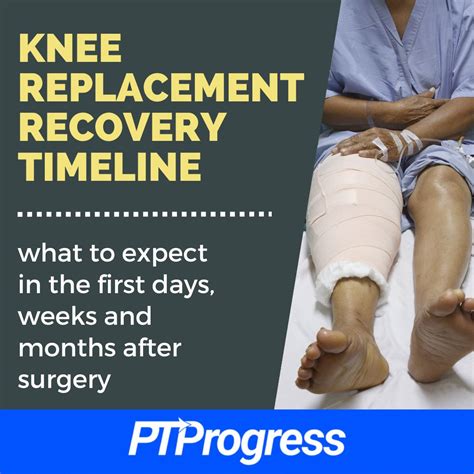Intro
Discover the average knee replacement healing time and recovery process, including physical therapy, rehabilitation, and post-operative care to ensure a smooth and successful knee surgery recovery.
The knee replacement healing time is a crucial aspect of the recovery process for individuals undergoing knee replacement surgery. Knee replacement, also known as knee arthroplasty, is a surgical procedure where the diseased or damaged knee joint is replaced with an artificial joint made of metal, plastic, or ceramic components. The primary goal of knee replacement surgery is to alleviate pain, restore mobility, and improve the overall quality of life for individuals suffering from severe knee damage or degenerative conditions such as osteoarthritis.
Knee replacement surgery has become a common and effective treatment option for individuals with severe knee damage or degenerative conditions. The procedure involves replacing the damaged or diseased knee joint with an artificial joint, which is designed to mimic the natural movement and function of the knee. The knee replacement healing time can vary depending on several factors, including the individual's overall health, age, and the complexity of the surgery. Generally, the recovery process can take several months to a year or more, during which time the individual will need to undergo physical therapy, follow a rehabilitation program, and make lifestyle adjustments to ensure a smooth and successful recovery.
The importance of understanding the knee replacement healing time cannot be overstated. A well-planned and executed recovery process can significantly impact the outcome of the surgery, reducing the risk of complications, promoting optimal healing, and enabling individuals to regain their mobility and independence. In this article, we will delve into the details of the knee replacement healing time, exploring the various stages of recovery, the factors that influence the healing process, and the tips and strategies for ensuring a successful and speedy recovery.
Knee Replacement Surgery Overview

Knee replacement surgery is a major surgical procedure that involves replacing the damaged or diseased knee joint with an artificial joint. The surgery is typically performed under general anesthesia or regional anesthesia, and the procedure can take several hours to complete. The surgeon will make an incision in the knee, remove the damaged or diseased tissue and bone, and implant the artificial joint. The artificial joint is designed to mimic the natural movement and function of the knee, allowing individuals to regain their mobility and independence.
Types of Knee Replacement Surgery
There are several types of knee replacement surgery, including total knee replacement, partial knee replacement, and revision knee replacement. Total knee replacement involves replacing the entire knee joint with an artificial joint, while partial knee replacement involves replacing only the damaged or diseased portion of the knee joint. Revision knee replacement involves revising or replacing a previously implanted artificial knee joint that has failed or become worn out.Stages of Knee Replacement Healing

The knee replacement healing time can be divided into several stages, each with its unique challenges and requirements. The stages of knee replacement healing include:
- Immediate post-operative stage: This stage lasts for several days to a week after surgery, during which time the individual will need to rest, ice, and elevate the affected leg to reduce pain and swelling.
- Early recovery stage: This stage lasts for several weeks after surgery, during which time the individual will need to undergo physical therapy, follow a rehabilitation program, and make lifestyle adjustments to promote healing and mobility.
- Intermediate recovery stage: This stage lasts for several months after surgery, during which time the individual will need to continue with physical therapy, strengthen the surrounding muscles, and gradually increase their activity level.
- Advanced recovery stage: This stage lasts for several months to a year or more after surgery, during which time the individual will need to maintain their physical therapy routine, continue to strengthen the surrounding muscles, and make long-term lifestyle adjustments to ensure optimal healing and mobility.
Factors Influencing Knee Replacement Healing Time
Several factors can influence the knee replacement healing time, including:- Age: Older individuals may require a longer recovery time due to decreased mobility and increased risk of complications.
- Overall health: Individuals with underlying medical conditions, such as diabetes or heart disease, may require a longer recovery time due to increased risk of complications.
- Surgical complexity: More complex surgical procedures, such as revision knee replacement, may require a longer recovery time due to increased tissue damage and trauma.
- Rehabilitation program: A well-planned and executed rehabilitation program can significantly impact the outcome of the surgery, reducing the risk of complications and promoting optimal healing.
Rehabilitation and Physical Therapy

Rehabilitation and physical therapy play a critical role in the knee replacement healing process. A well-planned and executed rehabilitation program can help individuals regain their mobility and independence, reduce the risk of complications, and promote optimal healing. The rehabilitation program typically includes:
- Pain management: Managing pain and discomfort is essential for promoting optimal healing and mobility.
- Range of motion exercises: Range of motion exercises can help improve flexibility and mobility, reducing the risk of stiffness and contractures.
- Strengthening exercises: Strengthening exercises can help improve muscle strength and stability, reducing the risk of falls and injuries.
- Functional activities: Functional activities, such as walking, climbing stairs, and balancing, can help individuals regain their independence and mobility.
Tips and Strategies for Successful Recovery
Several tips and strategies can help individuals achieve a successful and speedy recovery, including:- Follow the rehabilitation program: Following the rehabilitation program and attending physical therapy sessions can help individuals regain their mobility and independence.
- Manage pain and discomfort: Managing pain and discomfort is essential for promoting optimal healing and mobility.
- Maintain a healthy lifestyle: Maintaining a healthy lifestyle, including a balanced diet, regular exercise, and adequate rest, can help promote optimal healing and mobility.
- Stay hydrated: Staying hydrated is essential for promoting optimal healing and mobility, reducing the risk of complications and infections.
Complications and Risks

As with any surgical procedure, knee replacement surgery carries several risks and complications, including:
- Infection: Infection is a significant risk factor for knee replacement surgery, and individuals may need to take antibiotics to reduce the risk of infection.
- Blood clots: Blood clots can form in the legs or lungs, and individuals may need to take blood thinners to reduce the risk of blood clots.
- Nerve damage: Nerve damage can occur during surgery, and individuals may experience numbness, tingling, or weakness in the affected leg.
- Prosthetic failure: Prosthetic failure can occur due to wear and tear, and individuals may need to undergo revision surgery to replace the failed prosthetic.
Preventing Complications and Risks
Several strategies can help prevent complications and risks, including:- Following the rehabilitation program: Following the rehabilitation program and attending physical therapy sessions can help individuals regain their mobility and independence, reducing the risk of complications and risks.
- Managing pain and discomfort: Managing pain and discomfort is essential for promoting optimal healing and mobility, reducing the risk of complications and risks.
- Maintaining a healthy lifestyle: Maintaining a healthy lifestyle, including a balanced diet, regular exercise, and adequate rest, can help promote optimal healing and mobility, reducing the risk of complications and risks.
- Staying hydrated: Staying hydrated is essential for promoting optimal healing and mobility, reducing the risk of complications and risks.
Conclusion and Final Thoughts

In conclusion, the knee replacement healing time is a critical aspect of the recovery process for individuals undergoing knee replacement surgery. Understanding the various stages of recovery, the factors that influence the healing process, and the tips and strategies for ensuring a successful and speedy recovery can help individuals achieve optimal healing and mobility. By following the rehabilitation program, managing pain and discomfort, maintaining a healthy lifestyle, and staying hydrated, individuals can reduce the risk of complications and risks, promoting optimal healing and mobility.
We invite our readers to share their experiences, ask questions, or provide feedback on the article. Your input is valuable to us, and we look forward to hearing from you. Please feel free to comment below or share this article with others who may benefit from the information.
What is the average recovery time for knee replacement surgery?
+The average recovery time for knee replacement surgery can range from several months to a year or more, depending on the individual's overall health, age, and the complexity of the surgery.
What are the risks and complications associated with knee replacement surgery?
+The risks and complications associated with knee replacement surgery include infection, blood clots, nerve damage, and prosthetic failure.
How can I promote optimal healing and mobility after knee replacement surgery?
+Following the rehabilitation program, managing pain and discomfort, maintaining a healthy lifestyle, and staying hydrated can help promote optimal healing and mobility after knee replacement surgery.
